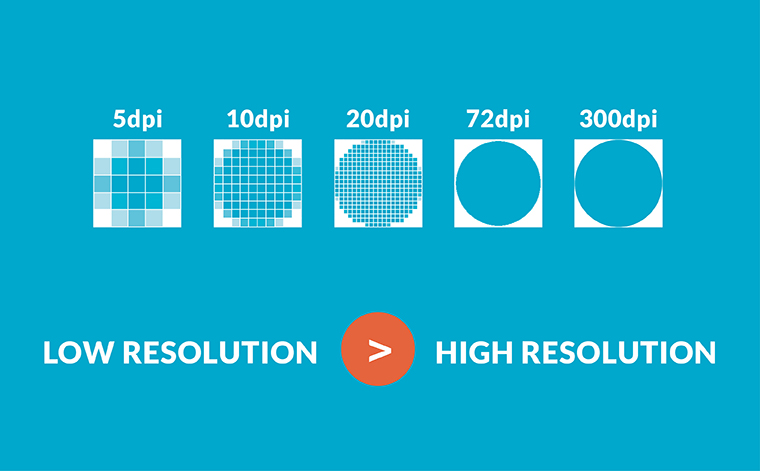File Resolution for Screen-Printing and Embroidery

Quality and correct art file types are essential to garment decoration and I wanted to take a second to elaborate on why that is. For this post to truly make sense you need a basic understanding of how the set-up and production processes works for both screen-printing and embroidery. There is tons of information online and throughout our site if you want to dig deeper into the processes but we’ll cover them briefly here.
I’m also going to say that screen-printing and embroidery are spot color systems. It’s ok if that term doesn’t mean anything just yet but hopefully it will by the time you get through this page. We don’t expect our customers to always have ideal file types but it can save you some money to take the time to dig up the high-resolution files if they exist. 90% of the time the origin files are created at high resolution and the low-resolution versions are just saved as alternatives for use on websites and other digital media.
Screen-Printing is done by dividing the art up by color, creating stencils that represent the positives of that information then registering it back together on a press. A squeegee then pushes ink through the stencil onto the garment to recreate the image. It may be the most tried and true form of printing and has been practiced for some 2,000 years.
Embroidery or more specifically machine embroidery is done by sewing out stitches in a specific order and color to recreate an image. Think of it like an X Y grid of connect the dots. We use digitizing software to separate the art into stitch paths by color and stitch type. The embroidery machine then uses this information to execute the sew-out.
Now we have several forms of digital printing and I want to mention that file quality is important there also, however it’s a little different. Digital printing is capable of recreating the art as it is, there are no color count limitations and digital has a far higher dot per inch resolution or DPI as is commonly know. Basically low resolution files create low resolution digital prints but it still works where as with screen-printing and embroidery files that are low resolution may not even be compatible with print separation and embroidery digitizing.
That’s why when you think of resolution or file quality for embroidery and screen-printing it helps to think of it in terms of a path. Because you can only embroider or screen-print 100% of a color all the boundaries of the objects in an image need to be well defined. That way they can be clearly divided into screen separations or embroidery sewing fields.
This is where resolution and file type come in. The term resolution really only pertains to bit maps so .JPG .PNG or other raster files. This is because they are ‘bitmaps’ or basically a grid of dots that make up an image. The term DPI defines how many dots resolution are in each square inch, high resolution is 300 DPI and low is typically 72 DPI. Also once a file is saved as low resolution the high resolution information is lost forever, you can’t just resave it as 300DPI and call it good.
When we’re talking about bitmaps physical size has to be considered also. Because the resolution is a measurement of the dots per inch if you take a 300 DPI image at 3 in wide and scale it up in your computer to 6 in wide you have basically divided the resolution in two.
Now you’re like “what does all this have to do with screen printing and embroidery?” Well a lot because with spot color you need a defined edge. Like I said spot color is only 100% of a color, there’s no transparency or gradient. Think of it like making an art image out of colored construction paper. You have the shapes as spot colors and the edges of the paper would be the path. Low DPI files lack a hard edge or path making it difficult to define the shapes, boundaries and where they come together.
Let’s say you want to screen-print or embroider the pizza slice below. The low resolution file zoomed in obviously has a very rough edge between color elements. That makes it difficult to get this low resolution image into a spot color representation, the fall off of information where the color elements come together creates an undefined edge. An easy way to identify this would be to zoom in on your art. If it looks like the low resolution below you’ll need some help rending your art in a higher resolution form.

Say you provided us with the low resolution art file for this pizza print project, we would have to spend a considerable amount of time remastering it before screen separation or embroidery digitizing. The best garment decorations are near exact representations of the art our customers provide us, a healthy native file to work from is essential to this process.
Fortunately we do have competence in file mastering and graphic design services so If your project involves us handling your art in a design capacity we have hourly design rates that you can discuss with our sales team.
Thanks for taking the time to read this post. Feel free to reach out with any questions.





Leave A Comment